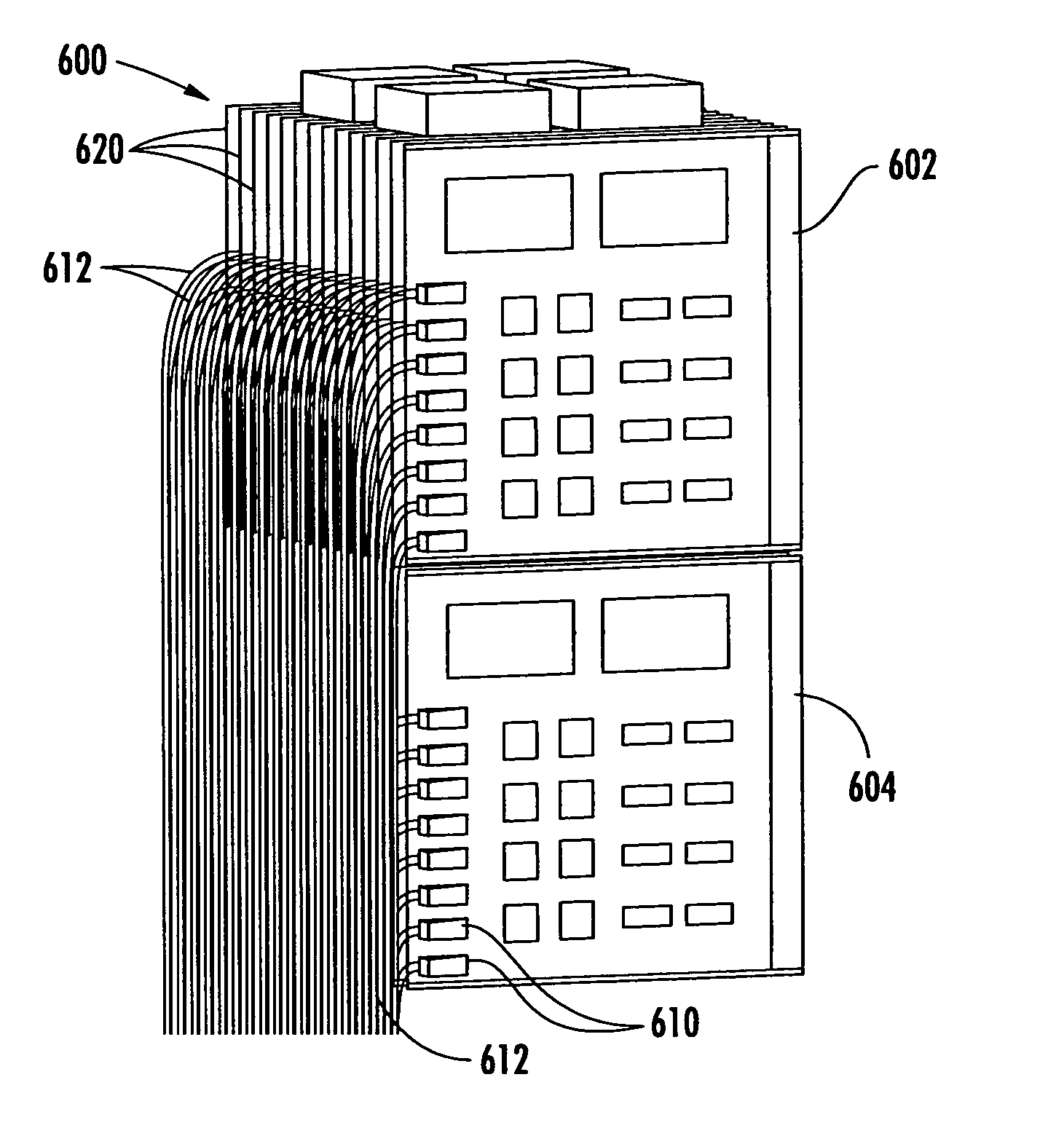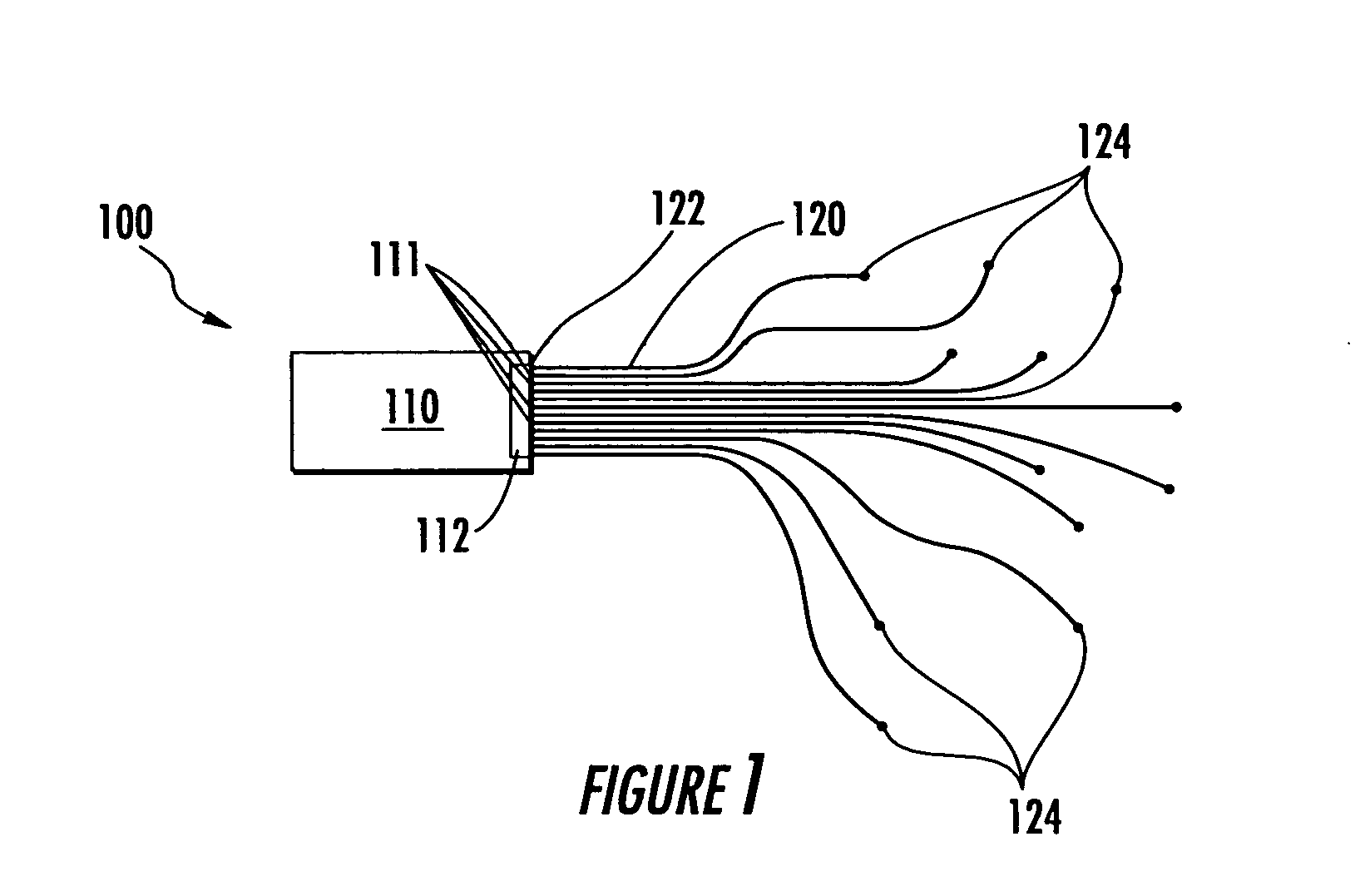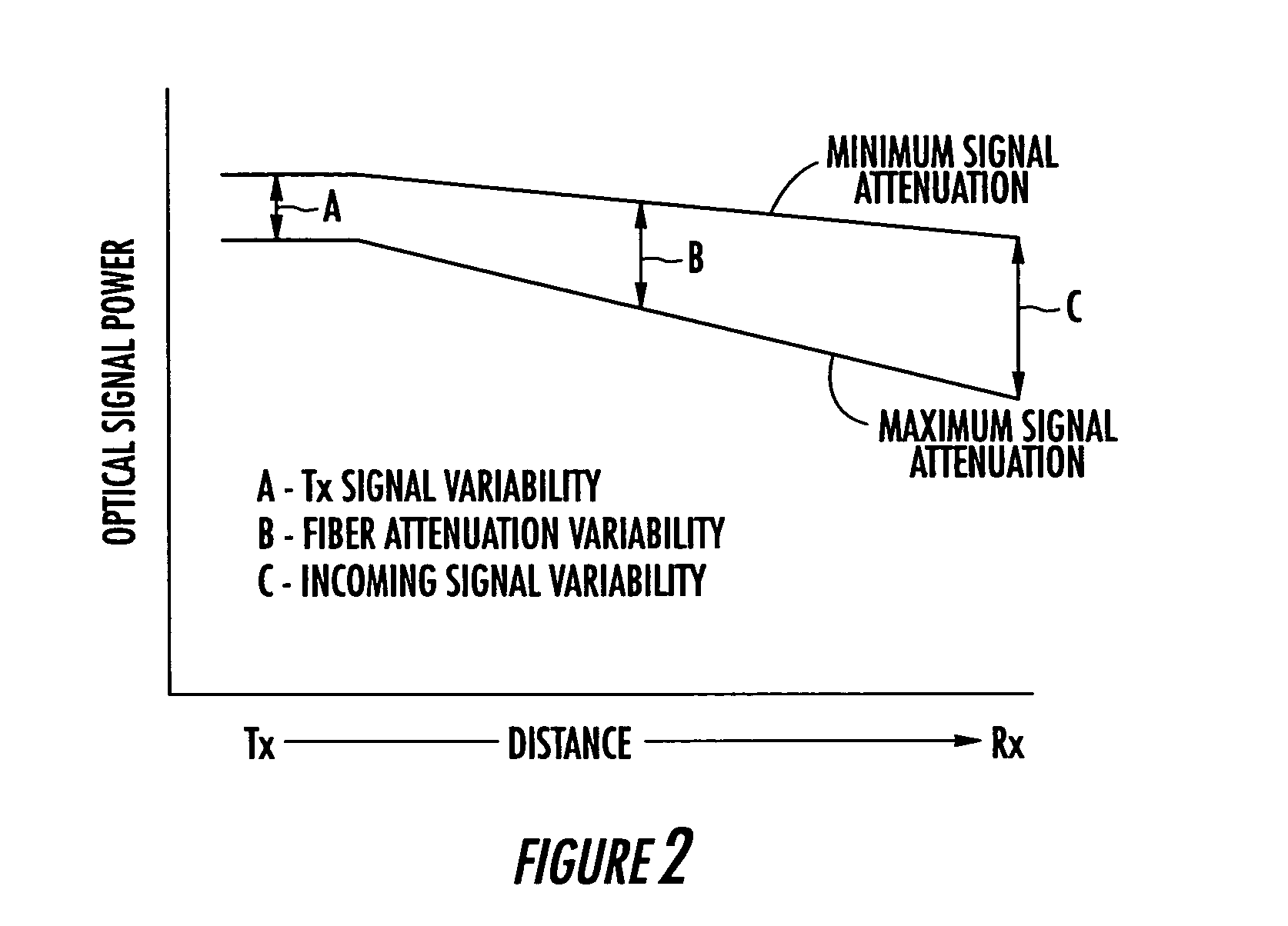Apparatus and methods for using fiber optic arrays in optical communication systems
- Summary
- Abstract
- Description
- Claims
- Application Information
AI Technical Summary
Benefits of technology
Problems solved by technology
Method used
Image
Examples
Embodiment Construction
[0024]FIG. 1 illustrates one embodiment of a fiber optic communication assembly 100 that includes an optical communication module 110 having multiple fiber optic ports 111 configured as an array 112. Multiple fiber optic conductors 120 are shown optically coupled to each of the fiber optic ports 111 of array 112. In this regard, a fiber optic conductor may be any combination of structure (e.g., fiber, filament, rod, etc.) and material (e.g., glass, plastic, etc.) suitable for conducting light waves from point to point. Although illustrated as a single segment in FIG. 1, each of fiber optic conductors 120 may include one or more individual fiber optic segments, optical connectors and / or other optical coupling devices coupled between its respective first end 122 and second end 124.
[0025] As shown in FIG. 1, multiple fiber optic conductors 120 extend from array 112 in adjacent parallel relationship (i.e., extending from array 112 in parallel or substantially parallel manner), and then...
PUM
 Login to View More
Login to View More Abstract
Description
Claims
Application Information
 Login to View More
Login to View More - R&D
- Intellectual Property
- Life Sciences
- Materials
- Tech Scout
- Unparalleled Data Quality
- Higher Quality Content
- 60% Fewer Hallucinations
Browse by: Latest US Patents, China's latest patents, Technical Efficacy Thesaurus, Application Domain, Technology Topic, Popular Technical Reports.
© 2025 PatSnap. All rights reserved.Legal|Privacy policy|Modern Slavery Act Transparency Statement|Sitemap|About US| Contact US: help@patsnap.com



